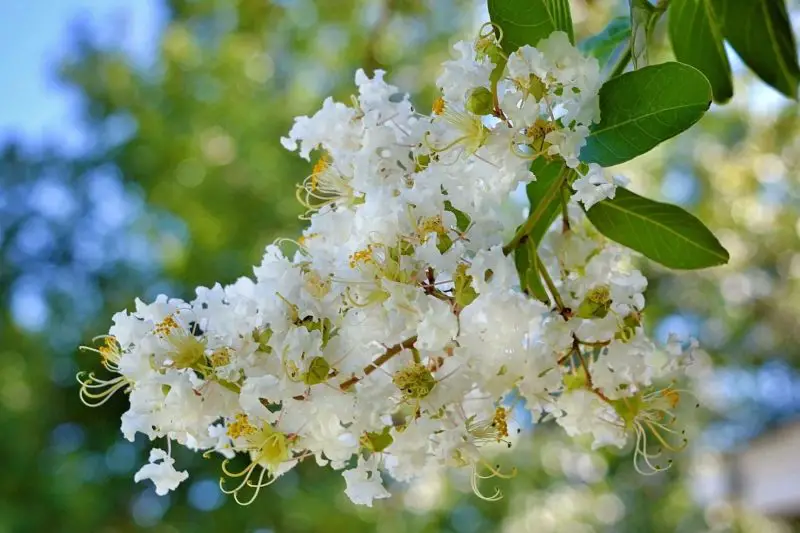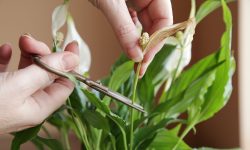Crepe myrtles are beloved for their stunning, vibrant blooms that brighten landscapes throughout the warmer months. These hardy trees and shrubs bring a splash of color to gardens, parks, and streets alike, with flowers ranging from soft pinks to deep reds and crisp whites. However, to enjoy the best blooms from your crepe myrtle, it’s important to understand when they typically flower and what influences their blooming cycle.
In this comprehensive guide, we’ll explore the timing of crepe myrtle blooms, the environmental factors that affect their flowering, and tips to encourage the most prolific and beautiful blossoms throughout the season.
Understanding the Bloom Cycle of Crepe Myrtles

Crepe myrtles (genus Lagerstroemia) are deciduous trees and shrubs that flourish in warm climates, especially in USDA hardiness zones 7 through 9. The blooming period of crepe myrtles is one of their most attractive features. Typically, these plants begin to bloom in late spring or early summer and continue to flower well into early fall.
The timing of their bloom is largely influenced by temperature and daylight. As spring transitions to summer, rising temperatures and longer days signal crepe myrtles to produce flower buds. These buds then develop and open, often providing weeks or even months of colorful display. Depending on the variety, some crepe myrtles bloom earlier or later within this window, but generally, their peak flowering occurs between June and August in many regions.
Regional Variations Affecting Bloom Time
Where you live plays a significant role in determining when crepe myrtles bloom. In warmer southern regions, such as the southern United States, crepe myrtles often bloom earlier—sometimes as early as May. This is because milder winters and earlier springs encourage earlier bud development.
Conversely, in cooler northern parts of their hardiness range, crepe myrtles may not bloom until later in summer, sometimes in July or even August. Late frosts or cooler spring temperatures can delay flowering, shortening the overall blooming period.
Altitude and microclimates can also influence bloom time. For instance, crepe myrtles planted in sheltered urban areas might bloom earlier than those in exposed or higher elevation settings. Gardeners in colder regions should expect a shorter flowering season, while those in warm climates may enjoy blooms that last for several months.
How Weather Conditions Impact Blooming
Weather conditions during both winter and spring have a major impact on crepe myrtle blooming. A mild winter generally helps the plant build up energy reserves necessary for abundant flowering. However, if winters are too warm, this can sometimes interfere with the dormancy period, potentially reducing bloom quality.
Spring weather is equally important. Adequate rainfall and moderate temperatures support healthy growth and the formation of flower buds. Extended drought or excessive heat early in the growing season can stress the plant and reduce bloom size and number. Additionally, late spring frosts can damage emerging buds, delaying or even preventing flowers from forming in that season.
The heat of summer tends to support continued blooming, as crepe myrtles are heat-tolerant plants. They often produce successive waves of flowers, especially if deadheading or pruning is done to encourage new growth.
Selecting the Right Variety for Your Climate
Crepe myrtles come in many varieties, each with different bloom times, flower colors, and growth habits. Some varieties are bred specifically for earlier blooms, while others may have a longer blooming window.
For example, dwarf crepe myrtles often start blooming sooner and can flower repeatedly through the summer. Larger tree forms may take a bit longer to start blooming but can produce larger and more abundant flower clusters.
Choosing a variety well-suited to your local climate can help maximize your blooming season. Nurseries and garden centers often provide recommendations based on regional performance, so consulting local experts can be beneficial.
How to Encourage the Best Blooms on Crepe Myrtles
Proper care plays a crucial role in ensuring your crepe myrtle produces the best possible blooms. Providing full sun is essential, as crepe myrtles require at least six hours of direct sunlight daily to bloom well.
Soil quality and watering practices also affect flowering. Well-drained soil with moderate fertility supports healthy root systems. Overly rich soil can encourage excessive foliage growth at the expense of flowers, so balanced fertilization is key.
Pruning is another important factor. Pruning should be done carefully and at the right time—typically in late winter or early spring before new growth starts. This helps remove old, weak branches and stimulates vigorous new shoots that will bear flowers. Avoid heavy pruning in late summer or fall, as this can remove developing buds and reduce blooming.
Finally, protecting crepe myrtles from pests and diseases, such as powdery mildew or aphids, supports overall plant health and bloom quality.
Signs That Crepe Myrtles Are About to Bloom
As the bloom season approaches, there are several visual cues to watch for. Buds on crepe myrtle branches begin to swell and become plump as they prepare to open. These flower buds typically form on new growth from the previous year, so healthy, vigorous shoots are a good sign that flowering will be abundant.
Leaf color and growth patterns also offer hints. Crepe myrtles that receive adequate sunlight and nutrients develop vibrant green foliage and strong stems, setting the stage for successful blooming.
In late spring, you may notice the first colorful blossoms appearing at branch tips, often followed by a rapid increase in flowering over the following weeks.
Common Misconceptions About Crepe Myrtle Blooming
One frequent misconception is that crepe myrtles bloom once and then stop for the season. In reality, many varieties will produce multiple flushes of flowers throughout the summer if conditions are right. Regular deadheading or removing spent blooms can encourage this continued flowering.
Another misunderstanding concerns pruning. Some gardeners believe heavy “topping” or cutting back drastically in early spring promotes better blooms, but this practice can harm the tree’s structure and reduce bloom quality. Correct pruning techniques that focus on thinning and shaping are more effective for encouraging healthy, long-lasting flowers.
Additionally, some people expect crepe myrtles to bloom in the same way regardless of climate or care. However, environmental factors and maintenance practices greatly influence both the timing and quality of blooms.
The Role of Crepe Myrtles in Landscaping
Beyond their flowering, crepe myrtles are valued for their attractive bark and foliage, which provide year-round interest. In many landscapes, their bloom timing is coordinated with other flowering plants to create continuous color throughout the growing season.
Because they bloom during the warmest months, crepe myrtles help brighten gardens when many spring bulbs have faded. Their prolonged flowering period adds dynamic texture and visual appeal to outdoor spaces.
Garden designers often use crepe myrtles as focal points or as part of mixed borders to extend the season of interest. Their adaptability to pruning and variety of sizes makes them suitable for everything from small urban gardens to large parks.
Frequently Asked Questions About When Do Crepe Myrtles Bloom
When is the typical blooming period for crepe myrtles?
Crepe myrtles generally begin blooming in late spring to early summer and continue flowering through the summer into early fall. The exact timing depends on the variety and regional climate, with warmer areas seeing earlier blooms.
Do crepe myrtles bloom more than once in a season?
Yes, many crepe myrtle varieties can produce multiple rounds of blooms throughout the summer, especially if spent flowers are regularly removed to encourage new growth and flowering.
How does climate affect crepe myrtle bloom time?
Climate plays a significant role in bloom timing. In warmer southern regions, crepe myrtles often bloom earlier and for a longer duration. Cooler regions experience later and sometimes shorter blooming seasons due to temperature and frost factors.
Can pruning influence when crepe myrtles bloom?
Proper pruning, usually done in late winter or early spring, helps stimulate healthy new growth that produces flower buds. However, heavy pruning or pruning at the wrong time can reduce blooming.
What environmental factors can delay or reduce blooming?
Late spring frosts, drought stress, and poor sunlight can all delay or diminish the blooming of crepe myrtles. Ensuring adequate sun exposure, watering, and protection from frost helps support timely and abundant blooms.
Conclusion: Timing Your Crepe Myrtle Blooms for Maximum Impact
Understanding when crepe myrtles bloom and the factors that influence their flowering can greatly enhance your gardening experience. By choosing the right variety for your climate, providing proper care, and paying attention to environmental conditions, you can enjoy a spectacular display of colorful blooms from late spring through early fall.
Whether you live in a warm southern region or a cooler area at the edge of their hardiness, crepe myrtles have the potential to transform your garden with their long-lasting and vibrant flowers. Remember that bloom timing may vary, but with patience and good practices, the rewards are well worth the wait.
Enjoy the radiant beauty of your crepe myrtles, and make the most of their stunning flowering season!






